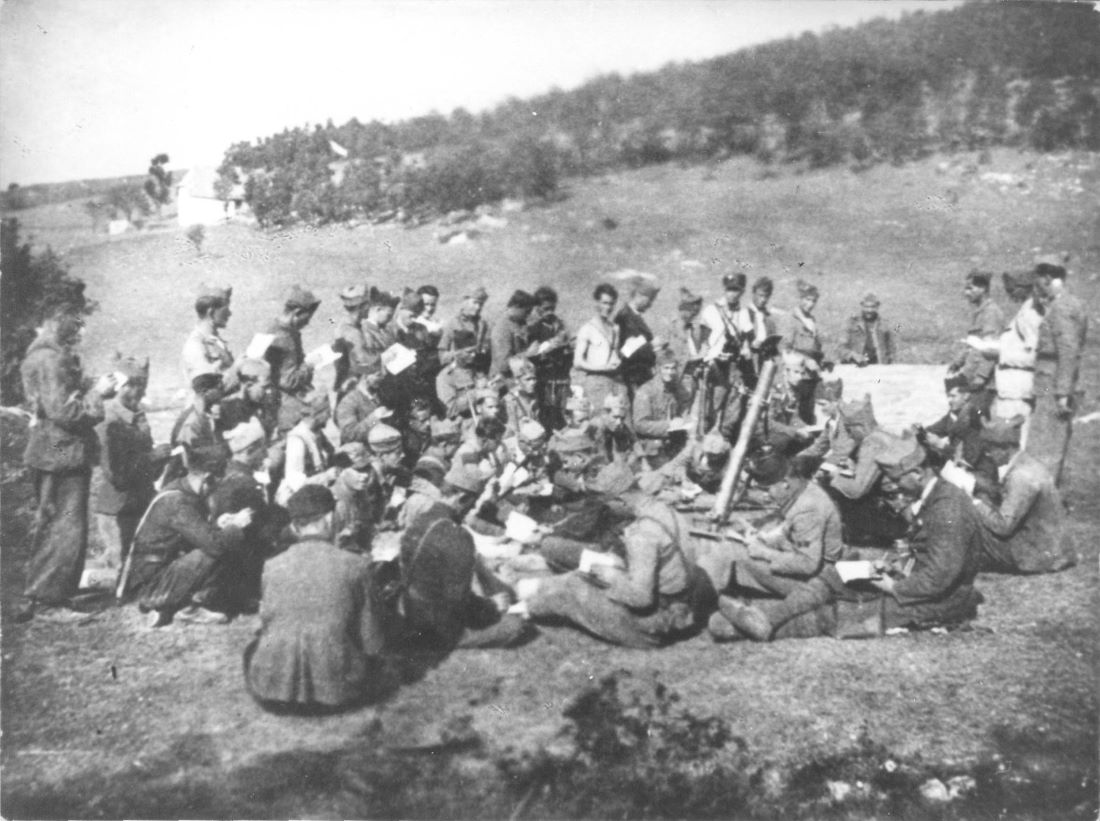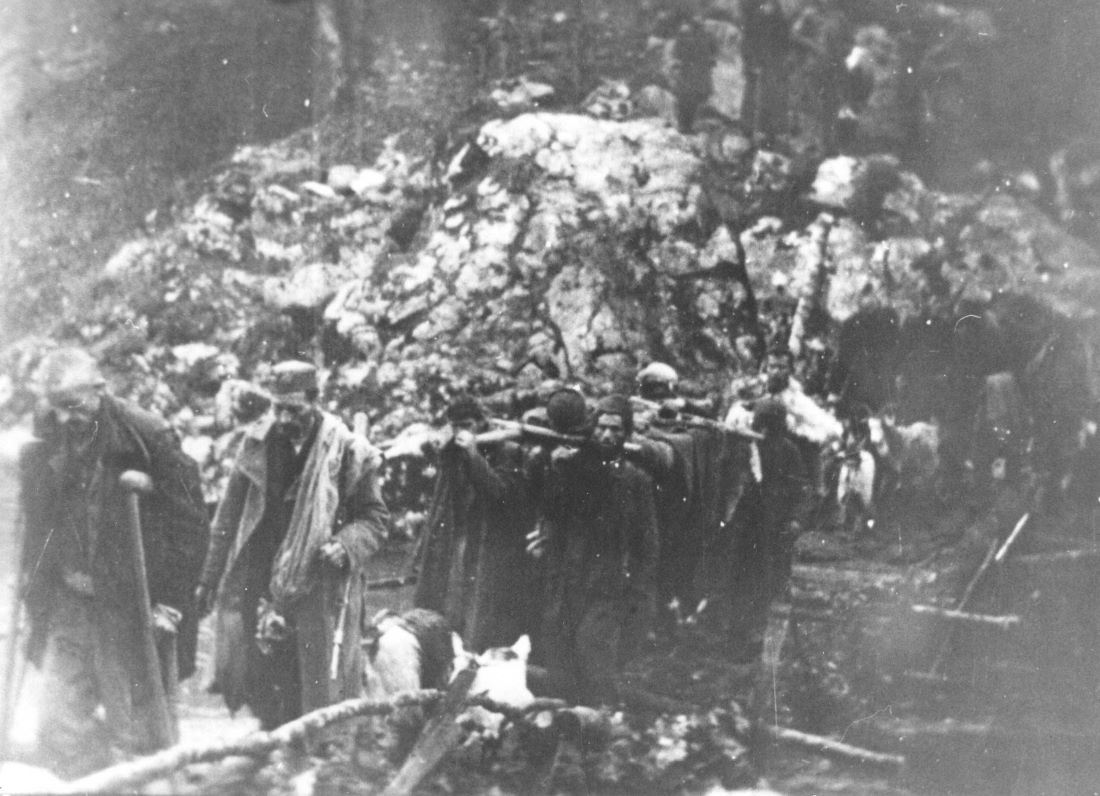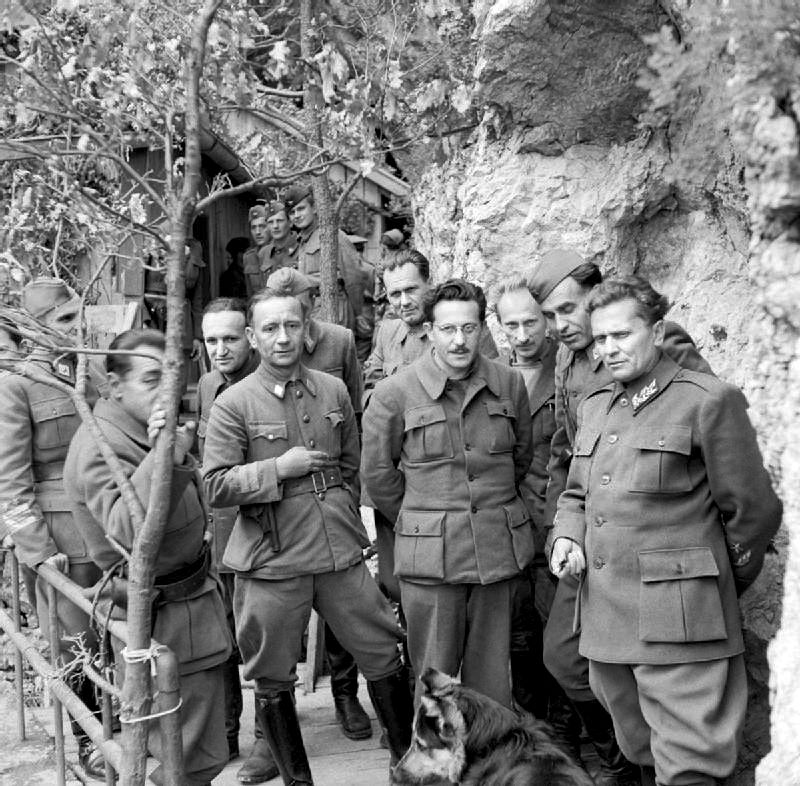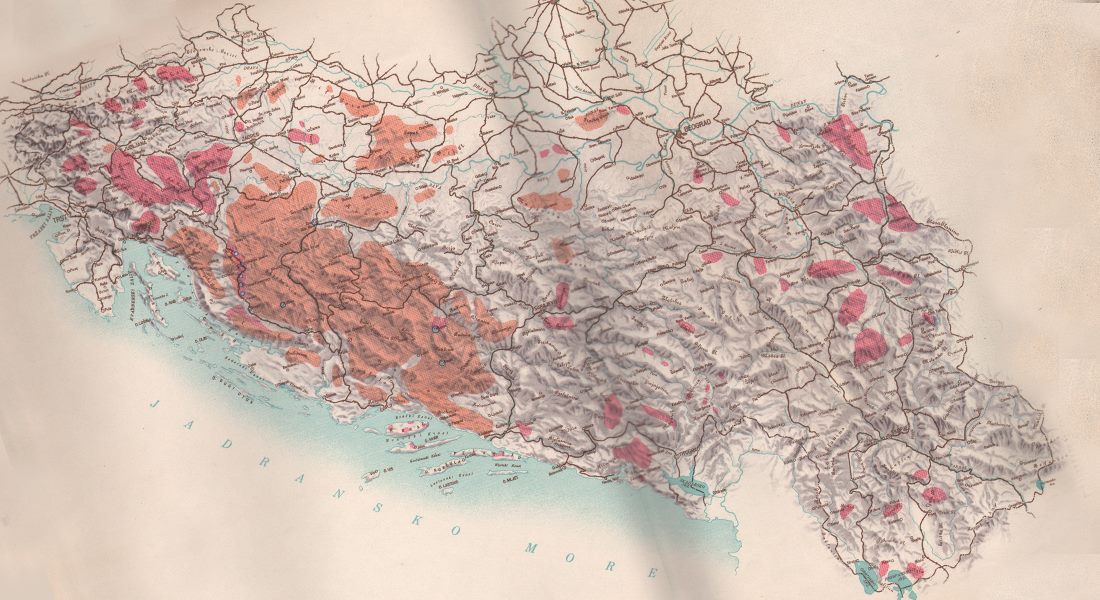The Yugoslav Partisans, led by Josip Broz Tito, were a communist-led resistance movement that fought against the Axis powers during World War II in the territory of former Yugoslavia. Comprising of various ethnic groups, they became one of the most effective resistance movements in occupied Europe. Formed in 1941, they steadily grew in number and influence, ultimately playing a crucial role in liberating Yugoslavia by 1945. Their guerrilla tactics and strategic operations were key to their success against a much larger and better-equipped enemy.
Please provide the titles of the four most famous battles you’d like to discuss.
Battle of Kozara, Summer 1942
The Battle of Kozara took place in the summer of 1942 in the Kozara mountain region of Bosnia. The Yugoslav Partisans, numbering approximately 3,500 fighters at the start of the battle, were confronted by a considerably larger Axis force. This force was comprised of around 11,000 German Wehrmacht troops, supplemented by approximately 19,000 Croatian (Ustaše) and Hungarian units. The primary goal for the Axis powers was to eradicate the Partisan presence in this region, given that Kozara had become a significant stronghold for the resistance.

Despite their overwhelming numerical disadvantage, the Partisans offered fierce resistance. However, the odds were heavily against them, and many were eventually encircled and captured. The battle’s aftermath was particularly grim: the Ustaše forces committed severe atrocities, leading to the internment of between 60,000 to 68,000 Serb civilians from the Kozara region into concentration camps, most notably Jasenovac. Although the Battle of Kozara was a tactical defeat for the Partisans, it became emblematic of resistance and sacrifice, galvanizing further opposition to the Axis occupation throughout the war.
Battle of Neretva, 1943
The Battle of Neretva, often referred to as the “Fourth Enemy Offensive,” took place early in 1943 and is one of the most significant confrontations of World War II in Yugoslavia. The Yugoslav Partisans, with an estimated strength of around 24,000 fighters, found themselves in a precarious situation, being pursued and encircled by a joint force of Axis powers. This Axis coalition consisted of around 80,000 troops, including German, Italian, Croatian (Ustaše), and Chetnik forces. The primary Axis objective was to encircle and annihilate the main Partisan force, which had been operating effectively in Bosnia.

Faced with such overwhelming numbers and a dire strategic situation, Tito, the leader of the Partisans, devised a plan to break through the encirclement. This involved destroying the only bridge over the Neretva River that the Partisans could use, thereby misleading the Axis into thinking they were retreating in a different direction. The feint worked, and the Partisans managed to cross the river, rebuild the bridge under enemy fire, and execute a counter-offensive. The successful breakout from the encirclement at Neretva marked a turning point in the war, showcasing the Partisans’ tactical ingenuity and their capability to confront and outmaneuver numerically superior forces. The battle increased the reputation and recognition of the Partisans, both domestically and internationally.
Battle of Sutjeska, 1943
The Battle of Sutjeska, often referred to as the “Fifth Enemy Offensive,” unfolded between May and June of 1943 in the rugged terrains of eastern Bosnia and Montenegro. The Yugoslav Partisans, under the command of Supreme Commander Josip Broz Tito, comprised a force of roughly 22,000 fighters. They found themselves facing a formidable Axis coalition that included German, Italian, Bulgarian, and various collaborationist forces, amounting to over 127,000 troops. The primary goal of this Axis offensive was to deal a decisive blow to the Partisan movement by encircling and annihilating Tito’s main force, which had been a persistent thorn in the side of the occupying forces.

The intensity of the enemy’s onslaught forced the Partisans into a dire defensive position amidst the Sutjeska river valley’s challenging terrains. Faced with hunger, exhaustion, and overwhelming enemy numbers, the Partisans, however, demonstrated remarkable resilience and endurance. With the loss of many fighters and even Tito being wounded, they managed to break through the encirclement at the cost of significant sacrifices. The Battle of Sutjeska, despite the high casualties, was a strategic victory for the Partisans. It further solidified their reputation as a formidable resistance movement and underscored the Axis powers’ inability to suppress the uprising in Yugoslavia.
Operation Rösselsprung, 1944
Operation Rösselsprung, commonly referred to as “Desant na Drvar” in the local context, took place on May 25th, 1944. The German operation had a singular and audacious objective: to capture or eliminate Josip Broz Tito, the leader of the Yugoslav Partisans. Tito and his headquarters were located in Drvar, a town in western Bosnia. To accomplish this mission, elite German paratrooper units, amounting to around 500-600 soldiers from the 500th SS Parachute Battalion, were deployed. They were complemented by additional ground forces, bringing the total strength of the attacking force to several thousand.

The initial airborne assault caught the Partisans off guard, with German paratroopers quickly establishing a foothold in Drvar. However, the Partisan response was swift and ferocious. While Tito managed to narrowly escape capture, thanks to his guards and the timely arrival of reinforcements, intense street-to-street fighting ensued throughout the day. By the evening, the German forces were forced to retreat, with the operation deemed a failure. The botched attempt to capture Tito had significant implications: it boosted the morale of the Partisan forces and showcased their capability to withstand and repel even the most elite units of the German military. The legend of Tito and the resilience of his forces grew stronger after the defense of Drvar.
Historical Challenge: Can You Conquer the Past?
Answer more than 18 questions correctly, and you will win a copy of History Chronicles Magazine Vol 1! Take our interactive history quiz now and put your knowledge to the test!

